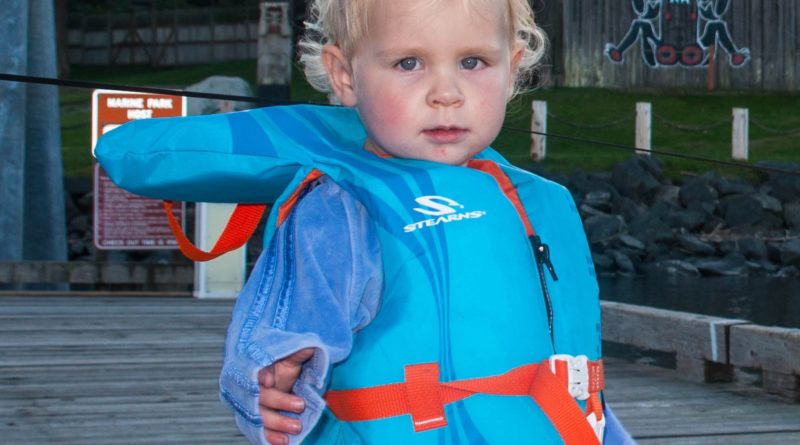Child Over Board! Ack!
Okay, so in the previous two posts I’ve talked about Man-Over-Board and various systems for detecting and helping recover the man/woman involved. But one thing I’ve discovered is that there is really no perfect option for children. Since our children will be on board, we need to figure out how to prevent, as well as detect, an over-board situation involving them.
Unfortunately, it’s not simple. In fact the industry and the Coast Guard combined has made it fairly difficult to provide children with the same level of security as an adult when venturing offshore.
The Challenge:
The coast guard generally approves various styles of lifejackets/PFDs for use on US flagged vessels. For children under 16, they have not approved any inflatable PFDs. Instead they have approved the various kinds of foam filled life jackets that you see kids wearing on power boats, jet skis, etc as well as the good old orange ones that have been around since the early days. (see this Google Image search for examples of what I’m talking about) This doesn’t sound like an issue at first, but in the context of an ocean going vessel there are effectively two rules with respect to going overboard..
Rule #1 – Make sure no one goes overboard
For adults on sailing vessels, the suspender style inflatable PFDs like our Mustang inflatable PFDs help facilitate this requirement.
First, the inflatable PFDs (assuming you purchase the right model) come with sailing harness D-rings which allow you to tether the PFD (and hence the wearer) to the boat with a secure attachment point. The idea here is that if the crew member falls, slips, gets hit by a wave, etc the tether keeps them ON the boat. For child lifejackets, I’ve not found any with dedicated sailing harness attachments. There are harnesses available that the kids can wear specifically for use with a tether, but those don’t include any floatation. So you have the choice of making sure your child stays on the boat, or making sure they float when they fall off, but not both.
Rule #2 – Quickly find and retrieve anyone who does go overboard
Again, the inflatable PFDs help facilitate this as well.
As I discussed before, the AIS-SART MOBs can be automatically activated to send a distress signal to nearby vessels over VHF and AIS radio systems. But they use the inflation of the PFD as the trigger. Without inflation, the MOB needs to be manually activated. I don’t know about you, but I don’t want to rely on a 6-year-old who has just fallen or been swept off a boat into the ocean to remember to (and how to) activate a distress beacon manually. Hopefully this never happens and we stick with rule #1 (keep everyone ON the boat) but we need to be prepared. Again, since there are no USCG approved inflatable PFDs for age 15 and under, we are left with a hole in the plan.
Our Solution:
Fortunately, the US isn’t the only country with kids on boats, and the EU among other governing bodies do allow sale of inflatable PFDs for young children. In particular, a company out of Tasmania, Australia called Stormy has an inflatable vest, with the necessary crotch strap, for kids as small as 15kg (that’s about 33lbs for us Americans). It meets ISO and Australia lifejacket standards for children.

The Stormy Youth PFD also has a dedicated harness ring for a tether, can come equipped with strobe light, and can even be custom embroidered. With this PFD, we can tether the kids to the boat AND provide floatation as well as an activation method for the MOB devices. Plus the kids feel more grown up since they will have the same style of PFD as the adults on the boat.
I ordered two of these PFDs online, and they shipped out in 1 day, embroidered with the kids names and our boat name. I plan to put two of our four MOB1’s into these vests and we’ll make sure they fit the girls just right.
We have received the PFDs but haven’t had time to try them. More to come once we test them out.




